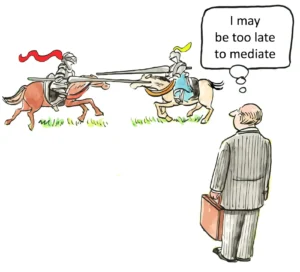Due Process Implications of Algorithmic Decision-Making in Law
The integration of algorithmic decision-making into legal systems has ignited a complex debate surrounding due process rights and the preservation of constitutional safeguards. As courts and government agencies increasingly adopt artificial intelligence tools for risk assessment, sentencing recommendations, and administrative determinations, fundamental questions emerge about whether these technologies can coexist with the Fifth Amendment and Fourteenth Amendment protections embedded in American jurisprudence. This tension between technological efficiency and individual liberties forms the crux of contemporary legal challenges in the digital age.
Historical foundations of procedural due process trace back to Magna Carta’s promise that no free man shall be deprived of liberty without the lawful judgment of peers. In modern constitutional interpretation, this translates to requirements for adequate notice, impartial tribunals, and meaningful opportunities to contest adverse government actions. The Supreme Court’s 1976 Mathews v. Eldridge decision established a balancing test weighing private interests against government efficiency-a framework now strained by automated decision systems that prioritize speed over human deliberation.
Recent applications of predictive algorithms in criminal sentencing demonstrate these tensions. Wisconsin’s COMPAS system, which assesses defendant recidivism risks, faced scrutiny in State v. Loomis (2016) when the state Supreme Court permitted its use despite defense challenges regarding proprietary code secrecy. While the court upheld the tool’s admissibility, dissenting opinions highlighted critical failures to meet due process standards: defendants cannot cross-examine algorithm developers about potential biases in training data or verify the mathematical models determining their liberty interests. These limitations create asymmetrical power dynamics between citizens and opaque technological systems operating under government authority.
Civil applications of machine learning tools raise parallel concerns. Federal agencies now deploy AI to determine eligibility for public benefits, immigration status adjustments, and regulatory compliance matters. A 2024 Administrative Conference of the United States study revealed that 68% of surveyed agencies use some form of automated decision-making, yet fewer than 15% provide detailed explanations when algorithms deny claims. This opacity violates core due process principles articulated in Goldberg v. Kelly (1970), which mandated that welfare recipients receive specific reasons for benefit terminations. When algorithms generate decisions through uninterpretable neural networks, agencies struggle to fulfill this basic requirement.
Constitutional challenges to algorithmic governance often center on the notice-and-comment provisions of the Administrative Procedure Act. Tech policy institutes recently filed suit against the Department of Health and Human Services over its use of AI-powered Medicaid fraud detection systems, arguing the agency failed to properly disclose operational details during rulemaking. These cases test whether existing regulatory frameworks can adapt to technologies that evolve faster than bureaucratic processes-a tension exacerbated by the trade secret protections corporations invoke to shield their algorithms from public scrutiny.
Proponents of legal AI integration emphasize efficiency gains and error reduction compared to human decision-makers. They cite studies showing machine learning models can process case law 240% faster than attorneys while maintaining 98% citation accuracy. However, these metrics ignore qualitative aspects of judicial reasoning-the ability to weigh mitigating circumstances, recognize novel legal arguments, or apply equitable discretion. The American Bar Association’s 2025 Ethics Committee opinion cautioned that overreliance on predictive analytics risks reducing legal outcomes to statistical probabilities rather than individualized justice.
Emerging solutions attempt to reconcile algorithmic efficiency with constitutional safeguards. Some jurisdictions now require “human-in-the-loop” protocols mandating judicial review of AI recommendations before final rulings. The European Union’s AI Liability Directive offers a potential model, creating rebuttable presumptions of fault when opaque algorithms cause demonstrable harm. However, implementing such frameworks in the U.S. faces hurdles due to federalism concerns and resistance from tech vendors protecting intellectual property.
State legislatures have taken fragmented approaches to regulating government AI use. California’s Algorithmic Accountability Act (2024) imposes transparency requirements for public sector algorithms, while Texas prohibits using facial recognition data in pretrial risk assessments. This patchwork regulatory landscape creates compliance challenges for national corporations and raises equal protection concerns when citizens receive differing procedural safeguards based on geography.
The evolution of AI constitutional law will likely hinge on reinterpretations of substantive due process doctrines. As algorithms increasingly mediate access to education, employment, and housing through credit scoring and background check systems, courts may extend heightened scrutiny to technologies functioning as de facto regulators. A 2025 Sixth Circuit decision (Johnson v. RentTrack) marked this shift, applying intermediate scrutiny to a private tenant screening algorithm under the state action doctrine-a precedent that could reshape liability standards across industries.
Military applications of predictive analytics introduce additional complexities under the Uniform Code of Military Justice. The Department of Defense’s Project Maven AI initiative, which uses machine learning to identify battlefield targets, recently faced internal audits questioning whether automated systems can satisfy the Law of Armed Conflict’s proportionality requirements. These concerns mirror civilian debates about whether algorithms can adequately weigh humanitarian considerations against tactical objectives.
In the private sector, employment algorithms used for hiring and promotions generate new frontiers for Title VII litigation. The Equal Employment Opportunity Commission’s 2024 guidance on AI discrimination established that employers remain liable for algorithmic bias regardless of whether third-party vendors develop the tools. This strict liability approach contrasts with the European Union’s risk-based regulatory model, reflecting differing philosophical approaches to balancing innovation with civil rights protections.
Educational institutions’ use of admissions algorithms presents another battleground for due process claims. Following the Supreme Court’s affirmative action rulings, universities increasingly turn to AI systems to diversify student bodies while avoiding explicit racial classifications. Legal scholars debate whether these “race-neutral” algorithms merely obscure prohibited categorization methods, potentially violating the Equal Protection Clause through technical subterfuge.
The Fourth Amendment intersects with algorithmic governance through predictive policing systems that analyze crime data to allocate law enforcement resources. Federal courts remain divided on whether algorithmic threat assessments constitute reasonable suspicion for stops and searches. A 2025 Ninth Circuit panel (United States v. Alvarez) found that reliance on unvalidated crime prediction software violated probable cause requirements, while the Seventh Circuit upheld similar practices in Illinois v. Pearson, prioritizing public safety over transparency concerns.
As generative AI tools like ChatGPT infiltrate legal practice, new ethical dilemmas emerge. The Florida Bar’s recent disciplinary action against an attorney who submitted AI-generated briefs containing fictitious citations illustrates the profession’s struggle to adapt ethical rules to technological capabilities. These incidents fuel debates about whether existing legal malpractice standards adequately address AI-related competency issues or if new regulatory frameworks become necessary.
International perspectives on algorithmic due process offer contrasting approaches. China’s Social Credit System demonstrates the potential for AI-enabled authoritarian control, while Germany’s Federal Constitutional Court has imposed strict proportionality requirements on public sector algorithms. These divergent models inform U.S. policy debates about whether to prioritize innovation leadership or fundamental rights preservation in AI development.
The Federal Rules of Evidence face mounting pressure to address AI-generated proof. Proposed amendments to Rule 901(b)(9) would create authentication standards for machine learning outputs, requiring parties to disclose training data sources and model architectures. Opponents argue this could stifle technological adoption, while proponents emphasize the need for reliability assessments comparable to those governing forensic science evidence.
Property rights in the algorithmic age present novel due process questions. A pending Supreme Court case (VanZandt v. Zillow) examines whether automated home valuation models constitute regulatory takings when used for tax assessments. The outcome could redefine how governments incorporate AI into property valuation systems while ensuring fair challenge procedures for homeowners.
Healthcare algorithms determining insurance coverage and treatment approvals face increasing due process challenges. A class action lawsuit against Medicare’s AI prior authorization system (Harrington v. Becerra) alleges that automated denials lack meaningful appeal mechanisms, violating beneficiaries’ rights to administrative review. These cases test whether procedural fairness requirements apply equally to human and algorithmic decision-makers in essential services.
The interplay between algorithmic transparency and national security interests creates constitutional friction. The Department of Homeland Security’s use of AI to screen visa applicants and flag potential threats relies on classified algorithms, leaving applicants unable to confront the evidence against them. Legal scholars argue this violates the right to confrontation principles established in Crawford v. Washington (2004), while security experts warn that disclosure requirements could compromise sensitive threat detection methodologies.
As these challenges proliferate, the legal profession grapples with its role in shaping AI governance. Law schools have introduced algorithmic justice clinics, while bar associations develop continuing education programs on AI auditing. These initiatives aim to equip attorneys with technical skills to litigate emerging due process violations while informing policy debates about constitutional safeguards in machine-mediated governance.
The path forward requires balancing innovation with fidelity to constitutional principles. Hybrid approaches incorporating algorithmic impact assessments, independent auditing requirements, and enhanced judicial oversight mechanisms may preserve due process protections without stifling technological progress. As Justice Thomas noted in a recent dissent, “The Constitution’s structural safeguards against arbitrary governance apply with equal force to silicon circuits as to human minds.” This evolving jurisprudence will define whether algorithmic systems become tools of democratic accountability or instruments of opaque authority in the 21st century legal landscape.
Citations:
- Exploring Digital Justice and Algorithmic Decision-Making in Asian Legal Systems
- Algorithmic Decision-Making and Its Impact on Due Process Rights
- Legal Analysis of Algorithmic Decision-Making in Modern Law
- AI’s Complex Role in Criminal Law and Due Process
- Digital Communication and Legal Adaptation in Modern Practice
- How AI Is Transforming the Legal Profession Today
- Ethical and Legal Implications of AI in Healthcare
- Algorithmic Decision-Making and Public Sector Accountability
- Promoting Procedural Due Process in AI-Driven Law
- AI Trends for 2025: Disputes and Managing Liability
- Frontiers in Artificial Intelligence: Legal and Ethical Challenges
- Evaluating Due Process in Automated Legal Decision-Making
- Legal and Ethical Issues in AI-Based Decision Systems
- Due Process Principles and Protection from Algocracy
- RAND Report on Algorithmic Decision-Making in Law
- Algorithmic Constitutionalism: The Next Frontier in Law
- Input Regarding AI and Criminal Justice Reform
- Max Planck Institute Report on AI and Legal Systems
- Structural Disconnects in Algorithmic Decision-Making and Law
- Oxford Journal of Legal Studies: Algorithmic Decision-Making
- European University Institute: Algorithmic Law and Governance
- AI and Legal Systems: Bridging Resource Gaps
- Legal Framework for Automated Decision-Making in Europe
- UNLV: Algorithmic Decision-Making and Due Process
- Challenging Arbitrary Agency Actions in Law
- State Legislatures Consider New AI Legislation in 2025
- Technology and Due Process Requirements in Law
- The Future of Legal Tech: AI’s Role in Law Practices
- Algorithmic Decision-Making in Child Welfare Cases
- CIA Report: Unclassified Extracts on AI and Law
- Year Ahead 2025: AI Regulations and Data Privacy
- Litigating Algorithms: AI in Government Decision-Making
- Illinois Supreme Court Announces AI Policy
- Algorithmic Decision-Making and Due Process in Criminal Law
- Attorney Stuart Kirchick Explains His Evolving Legal Approach
- PLI Institute on Privacy and Data Security Law
- Adapting SEO Strategies for the Legal Sector in the Age of AI
- AI, Law, and Technology: Legal Implications and Challenges
- AI in Healthcare: Benefits and Legal Considerations
- AI Laws and SEO: Staying Ahead in Search
- Colorado Technology Law Journal: AI and Legal Practice
- The Future of Legal SEO: Trends and Insights
- AI in Medical Research: Legal and Ethical Issues
- ScienceDirect: Legal and Social Impacts of AI
- AI SEO Legal Challenges and Compliance Issues
- Attorney Marketing Network: SEO for Law Firms
- Frontiers in Human Dynamics: AI and Society
- Richmond Journal of Law and Technology: AI in Law
- Algorithmic Decision-Making and Public Sector Accountability
- NCSL: Artificial Intelligence 2025 Legislation Overview
- Littler: 2025 AI Legislative and Regulatory Landscape
- NatLawReview: 2025 AI Legal Tech and Regulation Predictions
- ScienceDirect: Societal Impacts of Algorithmic Decision-Making
- Scholastica: Competition Law and Algorithmic Collusion
- ScienceDirect: Foresight and AI in Law
- Textmetrics: Key Legal Issues in SEO Content


















